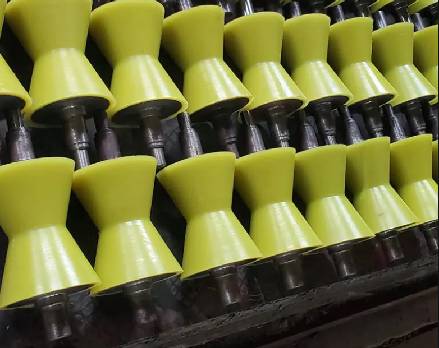 Afrikaans
Afrikaans  Albanian
Albanian  Amharic
Amharic  Arabic
Arabic  Armenian
Armenian  Azerbaijani
Azerbaijani  Basque
Basque  Belarusian
Belarusian  Bengali
Bengali  Bosnian
Bosnian  Bulgarian
Bulgarian  Catalan
Catalan  Cebuano
Cebuano  Corsican
Corsican  Croatian
Croatian  Czech
Czech  Danish
Danish  Dutch
Dutch  English
English  Esperanto
Esperanto  Estonian
Estonian  Finnish
Finnish  French
French  Frisian
Frisian  Galician
Galician  Georgian
Georgian  German
German  Greek
Greek  Gujarati
Gujarati  Haitian Creole
Haitian Creole  hausa
hausa  hawaiian
hawaiian  Hebrew
Hebrew  Hindi
Hindi  Miao
Miao  Hungarian
Hungarian  Icelandic
Icelandic  igbo
igbo  Indonesian
Indonesian  irish
irish  Italian
Italian  Japanese
Japanese  Javanese
Javanese  Kannada
Kannada  kazakh
kazakh  Khmer
Khmer  Rwandese
Rwandese  Korean
Korean  Kurdish
Kurdish  Kyrgyz
Kyrgyz  Lao
Lao  Latin
Latin  Latvian
Latvian  Lithuanian
Lithuanian  Luxembourgish
Luxembourgish  Macedonian
Macedonian  Malgashi
Malgashi  Malay
Malay  Malayalam
Malayalam  Maltese
Maltese  Maori
Maori  Marathi
Marathi  Mongolian
Mongolian  Myanmar
Myanmar  Nepali
Nepali  Norwegian
Norwegian  Norwegian
Norwegian  Occitan
Occitan  Pashto
Pashto  Persian
Persian  Polish
Polish  Portuguese
Portuguese  Punjabi
Punjabi  Romanian
Romanian  Russian
Russian  Samoan
Samoan  Scottish Gaelic
Scottish Gaelic  Serbian
Serbian  Sesotho
Sesotho  Shona
Shona  Sindhi
Sindhi  Sinhala
Sinhala  Slovak
Slovak  Slovenian
Slovenian  Somali
Somali  Spanish
Spanish  Sundanese
Sundanese  Swahili
Swahili  Swedish
Swedish  Tagalog
Tagalog  Tajik
Tajik  Tamil
Tamil  Tatar
Tatar  Telugu
Telugu  Thai
Thai  Turkish
Turkish  Turkmen
Turkmen  Ukrainian
Ukrainian  Urdu
Urdu  Uighur
Uighur  Uzbek
Uzbek  Vietnamese
Vietnamese  Welsh
Welsh  Bantu
Bantu  Yiddish
Yiddish  Yoruba
Yoruba  Zulu
Zulu Enhancing Conveyor Belt Performance with Effective Pulley Lagging Solutions
Conveyor Belt Pulley Lagging Enhancing Performance and Longevity
Conveyor systems are vital components in various industries, facilitating the efficient movement of materials. Among the key elements of these systems are the pulleys that help in driving the conveyor belts. One crucial aspect of pulley maintenance and performance enhancement is lagging. This article explores the significance of conveyor belt pulley lagging, the materials used, and the benefits it offers.
Lagging refers to the process of covering the pulley surfaces with a specific material to improve the interaction between the pulley and the conveyor belt. This interaction is vital for ensuring efficient power transmission, reducing slippage, and extending the service life of both the pulleys and belts. Without proper lagging, wear and tear can occur more rapidly, leading to increased operational costs due to frequent replacements and maintenance.
One of the primary functions of lagging is to increase the friction between the pulley and the conveyor belt. This is particularly important in applications where heavy loads are moved or in situations where belts operate at steep angles. Enhanced friction minimizes slippage, allowing for better control of the belt movement and ultimately improving the system's overall efficiency.
Lagging materials vary, but some of the most commonly used include rubber, ceramic, polyurethane, and even metal composites. Each material has its own advantages and is chosen based on the specific requirements of the application. Rubber lagging, for instance, is widely used due to its excellent friction properties, resistance to wear, and ability to absorb shock. Ceramic lagging, on the other hand, is utilized in high-abrasion environments, where additional grip and protection are necessary.
conveyor belt pulley lagging

Another advantage of pulley lagging is its role in protecting the pulleys themselves. The layer of lagging absorbs much of the stress and wear that would otherwise affect the pulley surface. This not only extends the life of the pulleys but also contributes to more consistent performance over time. In industries such as mining, construction, and manufacturing, where conveyor systems are subject to harsh conditions, maintaining the integrity of the pulleys through lagging is essential for preventing breakdowns and ensuring continuous operation.
Moreover, lagging can also contribute to reduced noise levels during operation. With a proper lagging material in place, the vibrations and sound generated by the interaction of the belt and pulley can be significantly dampened. This is particularly beneficial in environments where noise regulations are stringent or where worker comfort is a concern.
Implementing pulley lagging is a critical factor that should not be overlooked in conveyor system management. Regular inspections and maintenance of both pulleys and their lagging can lead to significant cost savings in the long run. By optimizing the performance of conveyor systems through effective lagging practices, companies can enhance productivity, minimize downtime, and ensure a longer lifespan for their equipment.
In conclusion, conveyor belt pulley lagging plays a vital role in the efficient operation of conveyor systems. By increasing friction, reducing wear, protecting pulleys, and minimizing noise, lagging materials contribute to the overall longevity and reliability of these critical components. As industries continue to evolve and demand higher efficiency, investing in quality lagging solutions will remain an essential practice for optimizing conveyor performance.
-
Revolutionizing Conveyor Reliability with Advanced Rubber Lagging PulleysNewsJul.22,2025
-
Powering Precision and Durability with Expert Manufacturers of Conveyor ComponentsNewsJul.22,2025
-
Optimizing Conveyor Systems with Advanced Conveyor AccessoriesNewsJul.22,2025
-
Maximize Conveyor Efficiency with Quality Conveyor Idler PulleysNewsJul.22,2025
-
Future-Proof Your Conveyor System with High-Performance Polyurethane RollerNewsJul.22,2025
-
Driving Efficiency Forward with Quality Idlers and RollersNewsJul.22,2025





























